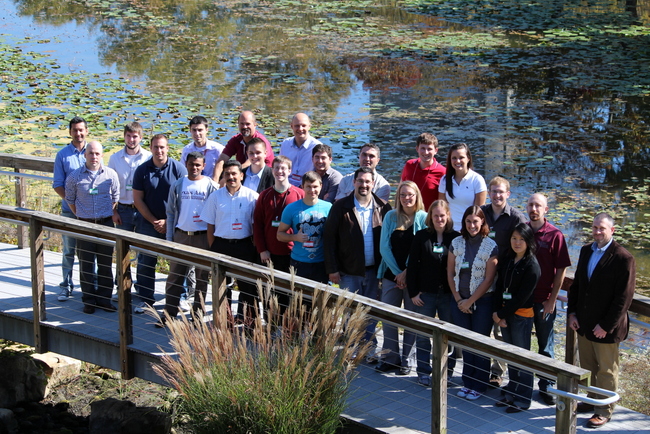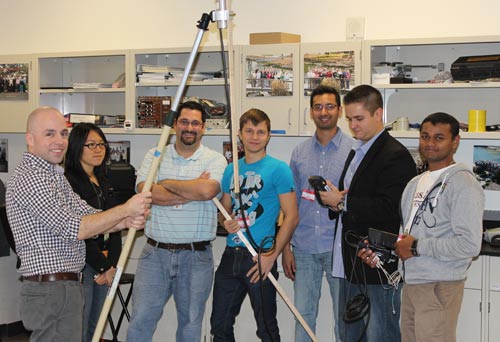
Six students from TAMU joined students from the Massachusetts Institute of Technology (MIT) and Pennsylvania State University (PSU) to participate in a hands-on workshop on nuclear security and safeguards at the Safeguards Laboratory at Oak Ridge National Laboratory (ORNL) from October 15-19, 2012. Faculty members Dr. Craig Marianno from NSSPI and Dr. Brenden Heidrich from PSU also took part in the workshop, as did two students from the Tomsk Polytechnic University in Russia who are currently interning at NSSPI. The workshop was led by ORNL staff members, including former NSSPI student Angela Thornton Lousteau, along with Dr. Alexander Solodov and Claudio Gariazzo, both of NSSPI.
The five-day program included exercises and tours that helped build upon the classroom work in nuclear security being conducted at each school. TAMU, MIT, and PSU are currently working together to establish a sustainable Nuclear Security Curriculum through support from the National Nuclear Security Administration’s Global Threat Reduction Initiative (GTRI) program. This is the first year that the three schools have jointly attended the Nuclear Security and Safeguards workshop, which has traditionally consisted of only TAMU students. While at ORNL they participated in exercises and tours that helped further the classroom education they are gaining through the GTRI program. Part of the group was supported directly by the GTRI Nuclear Security Education Program Office, while another part was supported by the Office for Material Protection, Control, and Accounting, also part of the National Nuclear Security Administration.

Workshop exercises typically concentrated on radiation detection using special nuclear material. Tours highlighted unique areas at ORNL and the nuclear security training facility at the Y12 National Security Complex. The University of Tennessee’s Nuclear Engineering (UTNE) department also hosted an evening of activities for the workshop attendees, which included presentations, tours, and a dinner in the UTNE research facilities complex.
The participants from the various schools were able to grow academically, professionally, and socially through the week’s activities, and the relationships they developed will likely extend into their professional careers.